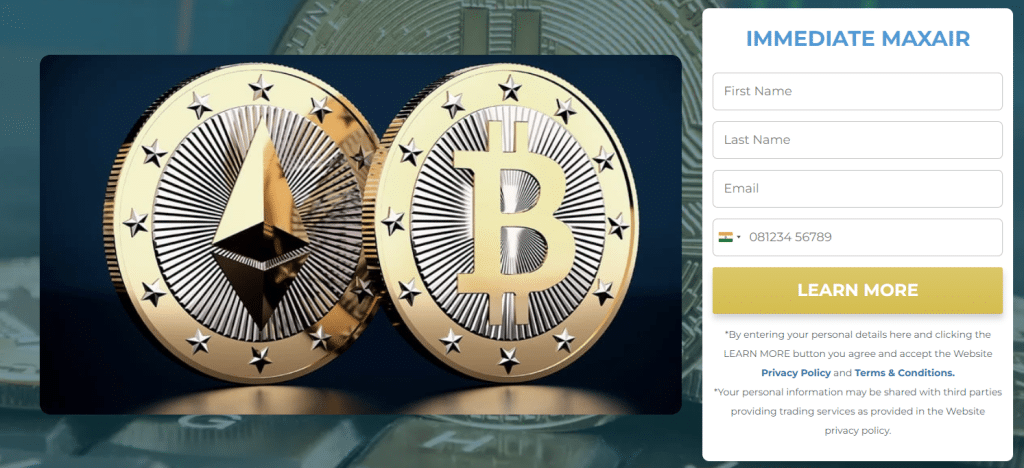News
CSR Full Form: Understanding Corporate Social Responsibility

Business
Immediate A7 Maxair: Your Comprehensive Guide
Business
Email Marketing Jobs Remote: Your Guide to a Growing Field

In today’s digital world, email marketing plays a crucial role in how businesses communicate with their customers. As companies increasingly rely on email to reach their audiences, the demand for skilled professionals in this area continues to grow. If you’re considering a career in email marketing, especially in a remote setting, this article is for you! We’ll explore what email marketing jobs entail, the skills you need, the benefits of working remotely, and how to find the right opportunities.
What is Email Marketing?

read also: essay-on-chandrayaan-3/
Before diving into jobs, let’s clarify what email marketing is. Email marketing involves sending targeted messages to a group of people via email. These messages can range from newsletters and promotional offers to personalized communications. The main goal is to engage customers, encourage sales, and build lasting relationships with them.
The Rise of Email Marketing Jobs
The shift towards digital marketing has created a surge in email marketing roles. Businesses recognize the importance of connecting with customers through email. With platforms like Mailchimp, Constant Contact, and Sendinblue making it easier to create and manage campaigns, there’s a growing need for professionals who can design, execute, and analyze these campaigns.
Types of Email Marketing Jobs
Email marketing jobs come in various forms, each focusing on different aspects of the marketing process. Here are some common roles you might encounter:
- Email Marketing Specialist: This role involves creating and managing email campaigns, segmenting lists, and analyzing performance metrics to improve future campaigns.
- Email Marketing Manager: A step up from the specialist, this position typically oversees the entire email marketing strategy, including team management and budget allocation.
- Content Writer: Writers focus on crafting engaging email content that resonates with the target audience, encouraging them to take action.
- Graphic Designer: Designers create visually appealing email templates and graphics that enhance the overall message.
- Data Analyst: Analysts examine the performance of email campaigns, looking at metrics such as open rates, click-through rates, and conversions to make data-driven decisions.
Skills Required for Email Marketing Jobs
To succeed in email marketing, you need a mix of creative and analytical skills. Here are some essential skills for remote email marketing jobs:
- Copywriting: Strong writing skills are crucial for crafting compelling email content that grabs attention and encourages action.
- Design Skills: While not mandatory, having a good eye for design can help you create visually appealing emails or work effectively with designers.
- Analytical Skills: You should be comfortable analyzing data and metrics to assess the performance of your campaigns and make informed decisions.
- Technical Proficiency: Familiarity with email marketing platforms and tools, as well as basic HTML/CSS knowledge, can be beneficial.
- Communication Skills: Since remote work often relies on digital communication, strong verbal and written communication skills are vital.
Benefits of Remote Email Marketing Jobs
Working remotely in email marketing offers numerous advantages:
- Flexibility: Remote jobs allow you to set your own schedule and work from anywhere, whether it’s your home or a coffee shop.
- Work-Life Balance: Without a daily commute, you can spend more time with family, pursue hobbies, or simply enjoy a better work-life balance.
- Access to Global Opportunities: Remote work opens doors to companies around the world, expanding your job prospects beyond your local area.
- Cost Savings: Working from home can save you money on transportation, work attire, and meals.
How to Find Remote Email Marketing Jobs
Finding remote email marketing jobs can seem daunting, but with the right approach, it can be straightforward. Here are some tips to help you get started:
- Job Boards: Websites like Indeed, Glassdoor, and LinkedIn often have dedicated sections for remote jobs. Use keywords like “remote email marketing” to narrow your search.
- Freelance Platforms: Consider platforms like Upwork, Freelancer, or Fiverr. These sites allow you to find freelance email marketing gigs, which can lead to long-term opportunities.
- Networking: Join professional groups on social media platforms, such as Facebook or LinkedIn. Networking can help you connect with others in the field and learn about job openings.
- Company Websites: Many companies post job openings directly on their websites. Identify companies you’re interested in and check their careers page regularly.
- Email Marketing Communities: Engage with communities focused on email marketing. Websites like Email Geek and Email Marketing Community provide resources and job boards.
click below: thejavasea-me-leaks-aio-tlp142/
Preparing for Your Remote Email Marketing Job
Once you find a position that interests you, it’s time to prepare. Here are some steps to ensure you’re ready for your remote email marketing job:
- Create a Strong Resume: Highlight your relevant skills and experiences. Tailor your resume to emphasize your expertise in email marketing and any specific tools you’ve used.
- Build a Portfolio: If possible, create a portfolio showcasing your best email campaigns, writing samples, and design work. This can set you apart from other candidates.
- Stay Updated on Trends: The digital marketing landscape is constantly evolving. Subscribe to industry blogs, attend webinars, and participate in online courses to keep your skills sharp.
- Practice Your Interview Skills: Prepare for common interview questions related to email marketing, such as your experience with segmentation or how you measure campaign success.
- Familiarize Yourself with Tools: Ensure you’re comfortable using popular email marketing tools and platforms. Familiarity with tools like Mailchimp, HubSpot, or ActiveCampaign can give you an edge.
Conclusion
Email marketing jobs are a fantastic opportunity for those looking to work remotely while playing a vital role in a company’s marketing strategy. With the right skills, preparation, and approach, you can find a rewarding career in this growing field. Whether you’re just starting or looking to advance your career, the world of email marketing is waiting for you.
FAQs
1. What skills do I need for an email marketing job?
Key skills include copywriting, design skills, analytical abilities, technical proficiency, and strong communication skills.
2. How can I find remote email marketing jobs?
Use job boards, freelance platforms, networking, and check company websites for openings.
3. Is prior experience necessary for email marketing jobs?
While experience can be beneficial, many entry-level positions are available, and internships or freelance work can help build your resume.
4. What tools are commonly used in email marketing?
Popular tools include Mailchimp, HubSpot, Constant Contact, and Sendinblue.
5. What are the benefits of working remotely in email marketing?
Benefits include flexibility, work-life balance, access to global job opportunities, and cost savings.other blogs
News
Essay on Chandrayaan-3: India’s Ambitious Lunar Mission

Chandrayaan-3 is India’s third lunar exploration mission, an important milestone in the country’s space program. The mission is a follow-up to Chandrayaan-2, aiming to land a spacecraft on the Moon’s surface and conduct scientific research. It showcases India’s growing technological and scientific capabilities in space exploration. This essay will explore what Chandrayaan-3 is, its objectives, the challenges faced, and its significance for India and the world.
What is Chandrayaan-3?

click below: thejavasea-me-leaks-aio-tlp142/
Chandrayaan-3 is part of India’s series of lunar missions developed by the Indian Space Research Organisation (ISRO). The goal of this mission is to land a rover on the Moon’s surface and gather data that will help scientists understand more about the Moon’s geology and composition.
Unlike Chandrayaan-2, Chandrayaan-3 does not include an orbiter. It consists of two main parts:
- Lander Module (LM): Designed to make a soft landing on the Moon.
- Rover: A vehicle that will explore the surface, collect samples, and send data back to Earth.
The mission is a crucial part of India’s long-term goals in space exploration and shows the country’s dedication to advancing its space technology.
Objectives of Chandrayaan-3
The main objectives of Chandrayaan-3 are straightforward but significant:
- Soft Landing on the Moon: A major goal is to achieve a safe and soft landing on the lunar surface. A soft landing means that the spacecraft touches down gently without damage, allowing it to function properly and carry out scientific tasks.
- Rover Deployment: After landing, the mission aims to deploy the rover, which will move around the landing site and collect valuable information about the lunar soil and environment.
- Lunar Surface Studies: The rover will conduct various experiments, including testing the physical and chemical properties of the Moon’s surface. This will help scientists understand more about the lunar environment and its potential for future exploration.
read also: top-new-movies/
Challenges Faced by Chandrayaan-3
Lunar missions are always challenging, and Chandrayaan-3 is no exception. Some of the key challenges include:
1. Landing on the Moon
One of the most difficult parts of any lunar mission is making a successful soft landing. Chandrayaan-2 had faced a setback when its lander, Vikram, crash-landed on the Moon in 2019. Learning from that experience, ISRO has worked hard to ensure that Chandrayaan-3 has improved technology and systems for a safer landing.
2. Lunar Environment
The Moon’s environment is harsh, with extreme temperatures, low gravity, and no atmosphere. These conditions make it difficult for electronic systems and machines to function smoothly. The lander and rover must be designed to withstand these challenges while performing scientific tasks.
3. Communication
Communication between the spacecraft and Earth is critical but difficult due to the distance between the Moon and our planet. Chandrayaan-3’s systems must be reliable to ensure that data from the rover can be transmitted back to Earth without any interruptions.
4. Cost and Resources
Space missions require a lot of resources, both in terms of money and technical expertise. While ISRO is known for cost-effective missions, the development, testing, and execution of a lunar mission like Chandrayaan-3 still require significant funding and human resources.
Significance of Chandrayaan-3
Chandrayaan-3 is an important mission for India and has global significance as well. Here’s why it matters:
1. India’s Growing Space Ambitions
India’s space program has made remarkable progress in the last few decades. With successful missions like Chandrayaan-1 and Mangalyaan (Mars Orbiter Mission), ISRO has already proven its capabilities. Chandrayaan-3 is another step forward, showing that India is serious about its space exploration goals. A successful mission will boost India’s position as a major player in the global space industry.
2. Scientific Research
The data collected from Chandrayaan-3 will provide new insights into the Moon’s composition. This can help scientists understand the history of the Moon, its formation, and its potential for future exploration, such as setting up lunar bases or mining resources. Learning more about the Moon’s surface and environment will also aid in planning manned missions in the future.
3. Inspiring Future Generations
Missions like Chandrayaan-3 inspire a new generation of scientists, engineers, and space enthusiasts. For young people in India and around the world, such missions spark interest in space exploration, science, and technology. It shows them that ambitious goals, like reaching the Moon, are possible with determination and innovation.
4. International Collaboration
Space exploration is becoming more and more collaborative. Chandrayaan-3’s success can open the doors to international partnerships, where countries can share knowledge, resources, and technology. This can accelerate advancements in space exploration and benefit humanity as a whole.
Lessons from Chandrayaan-2
Chandrayaan-3 builds upon the lessons learned from the Chandrayaan-2 mission, which was launched in 2019. Chandrayaan-2 included an orbiter, lander, and rover, but the lander, Vikram, unfortunately crashed during its descent to the lunar surface.
Despite this setback, Chandrayaan-2’s orbiter continued to operate successfully and provided valuable data. ISRO has used the experience from Chandrayaan-2 to improve the design and technology of Chandrayaan-3. Some of the key improvements include:
- Enhanced Landing Technology: The lander for Chandrayaan-3 has been equipped with better sensors and software to ensure a more controlled descent and landing.
- Simpler Design: By not including an orbiter in Chandrayaan-3, ISRO has been able to focus solely on the landing and rover deployment, making the mission simpler and more streamlined.
The Future of India’s Space Exploration
Chandrayaan-3 is not the end of India’s lunar ambitions. ISRO has already announced plans for future space missions, including Gaganyaan, India’s first human spaceflight mission, and further lunar exploration programs.
India also aims to collaborate with other countries for larger missions, such as Mars exploration and interplanetary travel. The success of Chandrayaan-3 will play a crucial role in setting the foundation for these ambitious projects.
Conclusion
Chandrayaan-3 is an exciting and important mission that holds great significance for India and the world. It demonstrates India’s growing expertise in space exploration and its ability to overcome challenges and learn from past experiences. The mission aims to achieve a successful soft landing on the Moon, deploy a rover, and conduct scientific research that will expand our understanding of the lunar environment.
Through missions like Chandrayaan-3, India continues to inspire future generations and contribute to the global efforts in exploring space. With more missions planned for the future, India is set to play an increasingly important role in the world of space exploration.
FAQs
1. What is Chandrayaan-3?
Chandrayaan-3 is India’s third lunar mission, aiming to land a rover on the Moon and conduct scientific research.
2. Why is Chandrayaan-3 important?
It is important because it showcases India’s space capabilities and contributes to scientific knowledge about the Moon.
3. What are the challenges of Chandrayaan-3?
Key challenges include achieving a soft landing, dealing with the harsh lunar environment, and ensuring reliable communication between the spacecraft and Earth.
4. How is Chandrayaan-3 different from Chandrayaan-2?
Chandrayaan-3 does not include an orbiter and focuses only on landing and rover deployment. It also incorporates improvements based on the lessons learned from Chandrayaan-2.
5. What are India’s future space exploration plans?
India has ambitious plans, including Gaganyaan (a human spaceflight mission) and further lunar and planetary exploration.other blogs
-

 Business1 month ago
Business1 month agoNippyFiles: The Complete Guide to Downloading and Sharing Files
-

 Celebrity6 months ago
Celebrity6 months agoSean Kaufman Ethnicity, Wiki, Age, Career And More
-

 Sports1 month ago
Sports1 month agoArcenturf Gagnant: Your Ultimate Guide to Smart Turf Betting
-

 Celebrity6 months ago
Celebrity6 months agoWho Is Jennifer Hermoso Partner? Bio, Wiki, Age, Career, Net Worth And More
-

 Tech2 months ago
Tech2 months agoWhat is Proxiyum? A Complete Guide to Web Proxy Services
-

 Sports1 month ago
Sports1 month agoCleveland Cavaliers vs Boston Celtics Match Player Stats
-

 Life Style6 months ago
Life Style6 months agoHow to Select a New Body Personal Care Professional
-

 Sports1 month ago
Sports1 month agoNew Orleans Pelicans vs. Lakers Match Player Stats: Analysis & Insights




